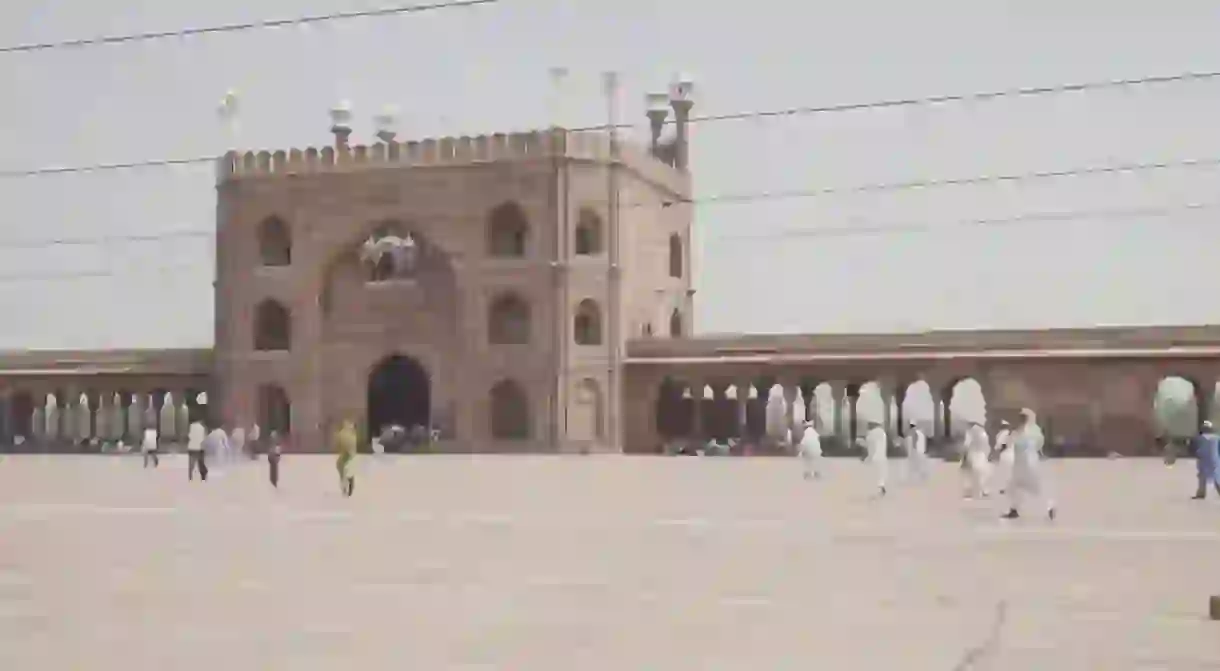A History of Jama Masjid in 60 Seconds

Jama Masjid is situated in the heart of Old Delhi. The peaceful sanctuary provides a perfect antithesis to the characteristic clamor of the ancient city. It remained the royal mosque until the demise of the Mughal dynasty and today is one of the most recognizable monuments of India.
The history
The crest of Mughal architecture was achieved during the reign of Emperor Shah Jahan, and Jama Masjid is an excellent example to showcase this fact. The Mughal king had lofty ambitions when he first set out to construct the mosque, as he had initially named it Masjid-i-Jahan-Numa, which can be translated as a “world-reflecting mosque.” The religious monument was the last of Shah Jahan’s creative contributions.
Work on the mosque began in 1644 and was finally completed in 1656. It is believed that over 5,000 workers were employed during the building of Jama Masjid. The total cost of construction was around one million rupees, a staggering amount at the time. This amount included only wages and not the cost of the materials. Syed Abdul Ghafoor Shah Bukhari was the first imam (Muslim religious leader) appointed by Shah Jahan. He was from Bukhara, Uzbekistan, which was a leading Islamic intellectual hub during the time.
After the Indian revolt of 1857, the British captured Jama Masjid and turned it into a military base for the next five years.
The architecture
As it is built on an elevation of over 30 feet, Jama Masjid towers over the adjoining area. Red sandstone and white marble are the two principal materials used in the construction of the mosque. It consists of three gates, four towers, three domes, and two minarets, which are 130 feet each. Previously, the eastern gateway was reserved solely for royal use. About 25,000 people can be accommodated at one time inside Jama Masjid.
The prayer hall inside measures 90 feet by 200 feet. There are Persian inscriptions above the portals leading to the prayer hall. The floor represents a prayer mat and is constructed of white and black ornamented marbles. The holy relics of Prophet Muhammad, including a beard hair, a pair of his sandals, and the impression of his footprint have been preserved inside the mosque.
There are certain architectural nuances that make Jama Masjid fascinating. For instance, it has been constructed in a way that its base is positioned at the precise height as the tip of the famous Peacock Throne, the royal Mughal seat, located in the Red Fort. This is said to symbolize the superiority of God over any king.













